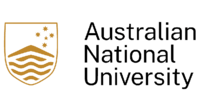
Australian National University
Bachelor of Design
Nationally Recognised Higher EducationCombine cutting-edge digital practices with internationally-renowned art and craft studio disciplines in the Bachelor of Design.
Design students will benefit from deep immersion in digital, manual and theoretical studies and a wide overview of creative practices. From coding, to making, to manufacture, students apply hands-on design to digital and physical materials. Students delve into web design, data visualisation, and interaction design, and experiment in studios to develop expertise in the latest digital form and fabrication processes.
This degree prepares students with transferable knowledge and skills required to make their mark on a rapidly changing world.
Delivery mode
Australian National University offers this course through the following delivery modes:
On campus
Work with instructors and classmates in a supportive and collaborative environment.
- Brinkin
- Observatory Rd, Coonabarabran
- 496 Murramarang Rd, Kioloa
- Canberra
- Cotter Rd, Weston Creek
Entry requirements
Domestic Students
- There are no mandated entry requirements.
Applicants with recent secondary education are assessed on:
- Completion of Australian Year 12 or equivalent, and the minimum Selection Rank (from their academic qualifications, plus any adjustment factors) requirement for this program;
- Co-curricular or service requirement (applies to applicants who complete secondary education in the year prior to commencing at ANU);
- English language proficiency; and
- Any program-specific requirements listed below.
Applicants with higher education study are assessed on:
- Previous higher education studies; or secondary education results if completed less than one full-time equivalent year (1.0 FTE) of a degree; or the result from a bridging or preparatory course;
- English language proficiency; and
- Any program-specific requirements listed below.
Applicants with vocational education and training (VET) study are assessed on:
- Previously completed VET qualifications at AQF level 5 or higher (i.e. a Diploma or above); or secondary education results if the VET qualification is not completed;
- English language proficiency; and
- Any program-specific requirements listed below.
Applicants with work and life experience are assessed on:
- ATAR or equivalent if secondary education was completed; or the Special Adult Entry Scheme (SAES); or work experience;
- English language proficiency; and
- Any program-specific requirements listed below.
Course fees
For more information about this course and payment options please enquire now.
Career opportunities
The Bachelor of Design will prepare you for the following roles.
Brand Designer
Brand Designers are responsible for an organisation’s visual identity and branding. They oversee the development of logos, icons, corporate colours...
Design Manager
A Design Manager oversees the creative and technical aspects of design projects within an organisation. You might work in various industries, inclu...
Industrial Designer
An Industrial Designer develops innovative product designs, balancing functionality with aesthetics. Their duties include conducting market researc...
Product Designer
A Product Designer creates new products for their own business or on behalf of an organisation. Products may meet a specific need or have a unique...
Interior Design Consultant
Interior Design Consultants are self-employed professionals who design and decorate indoor spaces for clients. They design for both residential and...
Commercial Interior Designer
Commercial Interior Designers conceptualise, design, and develop the interior spaces of commercial buildings such as shops, office complexes, hotel...
Set Designer
A Set Designer is a creative professional responsible for conceptualising and creating the physical environment in which film, television, theatre,...
About Australian National University
ANU is a world-leading university in Australia’s capital. Excellence is embedded in our approach to research and education.
ANU has seven academic colleges that house a number of schools and research centres that specialise in a range of disciplines - all relevant but some unique in Australia and our region.
